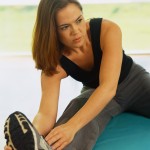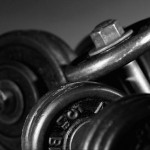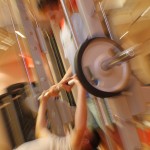 The complex and multi-faceted experience of living a long-term healthy lifestyle is ongoing. In the journey to wellness there will be accomplishments, setbacks, days of confidence, as well as days of uncertainty. And that’s the way it should be! If we’re not experiencing all of those, maybe all within one week even, then the regime needs reevaluating. Just as other life experiences are all emotionally and physically encompassing, the path to wellness is no different. However, somewhere along the line many of us got the impression that getting healthy is easy. The truth is, making the choice to get fit is easy. The “getting fit” part of getting fit takes sacrifice, effort, and often the daily renewal of commitment to the goal.
The complex and multi-faceted experience of living a long-term healthy lifestyle is ongoing. In the journey to wellness there will be accomplishments, setbacks, days of confidence, as well as days of uncertainty. And that’s the way it should be! If we’re not experiencing all of those, maybe all within one week even, then the regime needs reevaluating. Just as other life experiences are all emotionally and physically encompassing, the path to wellness is no different. However, somewhere along the line many of us got the impression that getting healthy is easy. The truth is, making the choice to get fit is easy. The “getting fit” part of getting fit takes sacrifice, effort, and often the daily renewal of commitment to the goal.
Here’s how to know if we’re on the right track with our fitness regime.
Are you experiencing results and progress? Results will most likely not be ongoing in a dramatic capacity in a long term fitness program. The body adapts in stages, and that’s often how we’ll experience results. So if results have temporarily slowed, try some unaccustomed exercise to ramp up results again. If progress has taken a back seat, change your regime entirely.
Do you experience feelings of being unsure and doubt that you’ll be able to stick with it? Uncertainty is part of setting goals that force us to stretch our comfort level to reach them. The goals should be big and far out enough to inspire a feeling of “is this really possible.”
Does your regime require effort? If you’re day dreaming through your workout, or cruising through class on auto-pilot, time to mix it up. Your regime should require taking day in and out action steps.
Do you have to build a strategy and think about how you are going to approach your goal? If you walk into the gym and do the same thing, in the same order, with the same weights, reps and sets without a thought as to how you’re going to approach or complete your regime, time to change approach. Your regime should make it necessary to develop a plan of attack regarding how you are going to get to your goal.
Do you miss your routine when you’re away from it? If you miss how your exercise makes you feel better, miss the energy it brings and satisfaction you experience from completing each workout you’re definitely on the right track.
Is it fun, does it bring you joy? It won’t be all laughs all the time, but more often than not it should be an enjoyable, fun, happy experience. If you’re not smiling even once during the workout, change it!
 Subscribe
Subscribe







